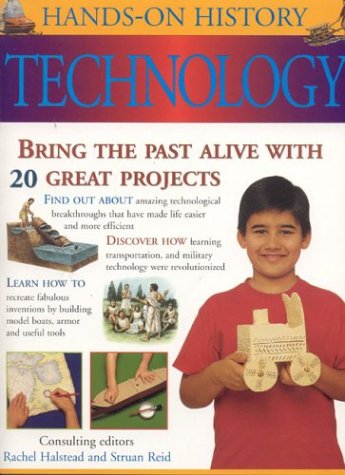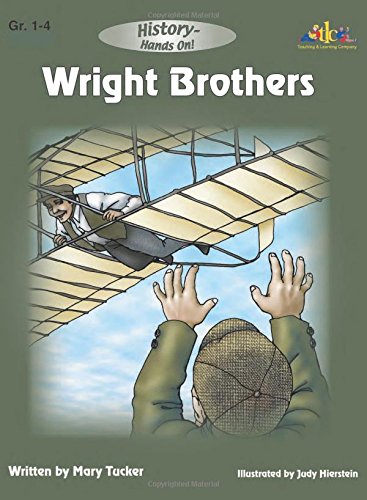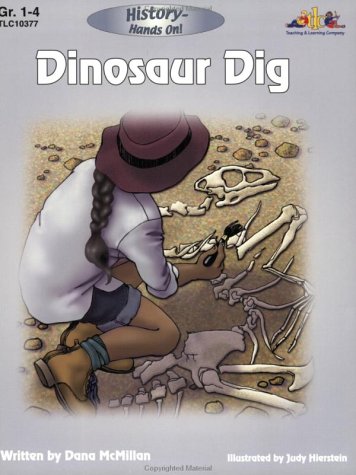-
Telegraph and Telephone: History--Hands On for Grades 1-4
Mary Tucker
Paperback (Teaching & Learning Company, Nov. 15, 2004)It's hard for kids today to understand the importance of good long-distance communication. All their lives they've been able to reach people far away, even in foreign countries, instantly by phone, fax and e-mail. It's almost inconceivable to them that they would have to wait a month or even 10 days for news. But that's the way it was in the middle of the 19th century in America. The United States weren't really united at all. Then along came a man named Samuel Morse who invented the telegraph and a code to go with it. It wasn't long before telegraph lines were strung from the Mississippi River to California and news was being tapped out in dots and dashes faster than anyone could have dreamed. Students will enjoy learning how it all happened, and they'll practice tapping out their own messages in Morse code as well as experimenting with other methods of long-distance communication. Just a few years after Morse's timely invention Alexander Graham Bell, while experimenting on ways to improve the telegraph, invented the telephone. That was just the beginning. Telecommunications today is like a tornado, sweeping everyone up in it and dropping us back to Earth with multifunctional office phones, cell phones, fax machines, radio, TV, e-mail and more. Students will discover through creative activities how it all began. They'll get involved in discussion, drama, creative writing, art, music, a fun rap, skits and more. After this study, your students will appreciate their modern tools of communication as they never have before! H
H
-
Fashion: Hands-On History Series
Struan Reid
Paperback (Anness, May 13, 2003)This colorful book looks at the practical clothes worn by people through the ages. It also examines the distinctive styles, fashions and materials adopted by different cultures throughout the world. Try creating your own Roman toga or a Japanese Netsuke Fox, and discover the fashions of the past. R
R
-
The History and Activities of the Islamic Empire
Gary E. Barr
Paperback (Heinemann, Oct. 17, 2006)Have you ever wondered what life was really like in the Islamic Empire? What did people wear? What did they eat? What sorts of games did kids play? Through history, recipes, crafts, activities, and games this series gives you a chance to experience what life was like throughout history. V
V
-
The Aztecs
Fiona Macdonald
Library Binding (QEB Publishing, Jan. 7, 2007)Get hands-on with history in this exciting series! Each book is not only packed with fascinating facts, but every page has an activity make a terracotta soldier, put on a shadow puppet play or wear a war helmet. Informative text and unique activities combine to bring ancient civilizations to life N
N
-
Projects About Ancient Rome
Karen Frankel
Hardcover (Marshall Cavendish Corp., Nov. 2, 2006)"Includes social studies projects taken from the ancient Romans"--Provided by publisher. Q
Q
-
Projects About the Ancient Aztecs
David C King
Library Binding (Benchmark Books, Sept. 1, 2006)"Includes social studies projects taken from the ancient Aztecs"--Provided by publisher. R
R
-
Projects about Nineteenth-Century European Immigrants
Marian Broida
Library Binding (Cavendish Square Publishing, Sept. 1, 2005)"Social studies projects taken from the European immigrant experience in nineteenth-century America"--Provided by publisher. U
U
-
Cattle Drive: History - Hands On
Robynne Eagan
Paperback (Teaching & Learning Co, Nov. 1, 2002)This exciting new series is designed not only to bring history to life for your students, these activities actually bring history into your classroom! Cowboys riding their horses across the prairie taking huge herds of cattle to market, sleeping under the stars as coyotes howl in the nightit's a scene familiar to all and especially beloved by children. Almost all boys, and many girls, at some point in their young lives dream of being cowboys. But most don't have any idea how hard those cowboys had to work or what dangers and discomforts they faced along the trail. This book will help students put themselves in the place of the cowboy and learn some of the details behind the exciting life-style. Students will learn how to make and throw a lariat (lasso) and how to read a cattle brand. They'll make a wanted poster, work together on a cattle drive mural and discover how important the right equipment was (cowboy hat, chaps, etc.). They'll cook and eat chili, cowboy style, play rodeo games and learn special cowboy words. Teachers are provided with background information, source materials and resources. All the little pardners in your class will enjoy spending some time in the old west learning about the rough and tough life of the cowboy. So, get along, little doggies, for a western adventure that's real! L
L
-
Technology: Hands-on Science Series
Rachel Halstead
Paperback (Anness, Dec. 15, 2003)Discover the wide-range of scientific and technological advances made throughout history, 20 great projects included. M
M
-
Projects about Nineteenth-Century Chinese Immigrants
Marian Broida
Library Binding (Cavendish Square Publishing, Sept. 1, 2005)"Includes social studies projects taken from Chinese immigrants of the 19th century"--Provided by publisher. R
R
-
Wright Brothers
Mary Tucker
Paperback (Lorenz Educational Press, March 1, 2002)When your students watch commercial airliners flying high in the sky, do they realize how much it took for that common sight to become a reality? When they see military jets blasting through the clouds, do they know how far flight has come in the last 100 years? Creative activities, games, action rhymes, songs, a skit and more involve students in discovering for themselves how the Wright Brothers dreamed of man in flight and worked diligently to bring their dreams to life. They'll learn about the almost ridiculous fragility of the first airplanes, the crazed and driven men who risked their lives trying to be the first to successfully fly and the success of two brothers who refused to give up. N
N
-
Dinosaur Dig
Dana McMillan
Paperback (Teaching & Learning Company, Oct. 16, 2002)All boys, and most girls, are intrigued by dinosaurs. They sit through movies about these huge creatures wreaking havoc on people, and the kids cheer for the dinosaurs! Some young children who can barely pronounce their own names can correctly say Brachiosaurus with no difficulty! Your students will love Dinosaur Dig. The difficulty may be getting them to move on to other subjects of study. If children love dinosaurs so much, you might as well bring them into your classroom! That's what the hands-on activities in this book help you do. Charts, time lines, diagrams, models they make themselves, dramatized stories, maps and much more will help students discover what dinosaurs looked like, what they ate and when and where they lived. They'll also learn about dinosaur hunters (paleontologists) and what they do, including some impressive discoveries of famous dinosaur hunters who lived many years ago. Dinosaurs may be dead, but interest in them is very much alive. Of course no one knows for sure why dinosaurs became extinct, but at the end of this book students are given an opportunity to express their opinions and discuss them. The discovery, exploration and investigation required by students in this study will be useful in their other schoolwork and in everyday life. M
M